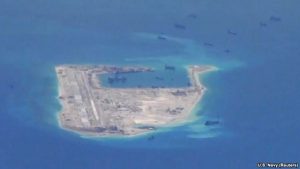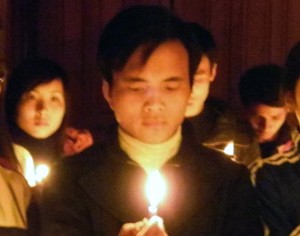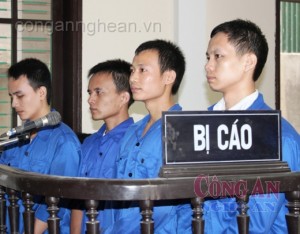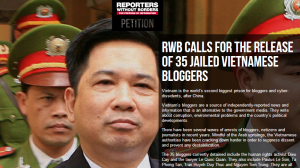
Artificial island illegally built by China in the contested Spratlys in East Sea (South China Sea)
In 40AD, Vietnam’s most celebrated national heroines, the Trung Sisters, led a revolt on the backs of war elephants against the Han dynasty. In the 1400s, the nobleman Le Loi drove out the Ming armies, establishing Vietnam’s longest-ruling dynasty. And Vietnam’s hardy soldiers repelled invading Chinese troops in 1979.
South China Morning Post, Aug 6, 2016
Ba Đinh District, Hanoi, not far from the Ho Chi Minh Mausoleum and the National Assembly.
I’m visiting a 77-year-old widow, Cao Ngoc Diep and her family at their ancestral temple-home.
Above one small shrine there’s a haunting photograph of the fallen soldier, Cao Minh Phi, killed in Nha Trang in 1968 by the Americans aged 28, leaving behind a sweet-faced widow and her four small children.
The English-speaking granddaughter Ngoc shows me around the other intricately carved shrines, crammed with deities and offerings of dragon fruit, cognac and cash.
I’m in an unseasonably hot Hanoi, catching up with friends and acquaintances.
Given the recent news about the South China Sea, most people are all too willing to offer their views on China. Indeed, with the border only 175km away, relations assume a certain immediacy.
The granddaughter says in English: “Of course we are suspicious of the Chinese. We don’t like them.” Her grandmother, in Vietnamese, says the same.
Opinions are almost uniformly negative. The night before, a leading journalist recently returned from the ASEAN Foreign Ministers’ meeting in Vientiane explained: “We cooperate in business and economics, but when it comes to sovereignty, we fight.”
It will be interesting to see how ASEAN comes to terms with an increasingly assertive China.
Could the Vietnamese, with thousands of years of living with China, provide the best template?
In 40AD, Vietnam’s most celebrated national heroines, the Trung Sisters, led a revolt on the backs of war elephants against the Han dynasty. In the 1400s, the nobleman Le Loi drove out the Ming armies, establishing Vietnam’s longest-ruling dynasty. And Vietnam’s hardy soldiers repelled invading Chinese troops in 1979.
Memories of these conflicts remain deeply embedded in the Vietnamese consciousness. But Vietnamese culture has been heavily influenced by China.
Chinese was the language of imperial Vietnam’s courts, literature and elite. Today, the Temple of Confucius in Hanoi is featured on the back of the 100,000 dong banknote.
China is Vietnam’s largest trading partner, accounting for 30 per cent of its imports. In Hanoi’s busiest fabric markets, most of the cloth sold is from China. You’ll see “Made in China” stamps on books, bowls, belts, and everything in between. Even Hanoi’s latest infrastructure megaproject, the US$553 million Hanoi Metro, is to be built by Chinese investors.
But the shared history has left the Vietnamese extremely wary of their northern neighbour. In 2014 anti-Chinese protests erupted after China deployed an oil rig in a disputed part of the South China Sea.
So what is the way forward for China and ASEAN, especially for countries with a mixed bag of ties with Beijing?
One thing to recognise is that the past matters. Yes, China is an economic reality. But one cannot expect ASEAN to fall into line just because of that.
As Dr Tran Cong Truc, former chairman of the government’s Committee on Border Issues says: “People find it very difficult to understand how Vietnam and China can both cooperate on an economic front and fight when it comes to sovereignty. To understand it, you must look at the long history between our two countries.”
Nevertheless, as the craggy former senior military intelligence operative tells me, this doesn’t mean ties must be set in stone. Asked about Vietnam’s warming ties with its cold war nemesis, America, he stresses: “Vietnam will support any country that supports its sovereignty.”
One can detect a sense of frustration in Vietnamese officials like Tran on Asean’s dithering on the South China Sea: “When the house of a neighbour is on fire, you don’t ignore it and think, ‘Oh that’s his fire, it’s not going to spread’. If you don’t cooperate, the fire will destroy us all…I really appreciate that the Philippines brought the South China Sea issue to the Permanent Court of Arbitration at The Hague. We believe that measures like this with Asean are our best route to resolving the issue while ensuring the stability and prosperity of the region.”
China will certainly pay a price if it continues its heavy-handedness in Southeast Asia. As Asean countries weigh up their national interest, there’s no doubt that Vietnam’s model – of shadow-boxing and constant vigilance – will become the norm.
In fact, it may be the best way forward if the region wants to maintain its autonomy. The rest of Asean can certainly learn from how Vietnam preserved both its independence and honour for so long.
Height Insoles: Hi, I do believe this is an excellent site. I stumbledupon …
http://fishinglovers.net: Appreciate you sharing, great post.Thanks Again. Keep writi…
Achilles Pain causes: Every weekend i used to pay a quick visit this site, as i w…






August 8, 2016
How Vietnam has kept China at bay over thousands of years
by Nhan Quyen • [Human Rights]
Artificial island illegally built by China in the contested Spratlys in East Sea (South China Sea)
South China Morning Post, Aug 6, 2016
Ba Đinh District, Hanoi, not far from the Ho Chi Minh Mausoleum and the National Assembly.
I’m visiting a 77-year-old widow, Cao Ngoc Diep and her family at their ancestral temple-home.
Above one small shrine there’s a haunting photograph of the fallen soldier, Cao Minh Phi, killed in Nha Trang in 1968 by the Americans aged 28, leaving behind a sweet-faced widow and her four small children.
The English-speaking granddaughter Ngoc shows me around the other intricately carved shrines, crammed with deities and offerings of dragon fruit, cognac and cash.
I’m in an unseasonably hot Hanoi, catching up with friends and acquaintances.
Given the recent news about the South China Sea, most people are all too willing to offer their views on China. Indeed, with the border only 175km away, relations assume a certain immediacy.
The granddaughter says in English: “Of course we are suspicious of the Chinese. We don’t like them.” Her grandmother, in Vietnamese, says the same.
Opinions are almost uniformly negative. The night before, a leading journalist recently returned from the ASEAN Foreign Ministers’ meeting in Vientiane explained: “We cooperate in business and economics, but when it comes to sovereignty, we fight.”
It will be interesting to see how ASEAN comes to terms with an increasingly assertive China.
Could the Vietnamese, with thousands of years of living with China, provide the best template?
In 40AD, Vietnam’s most celebrated national heroines, the Trung Sisters, led a revolt on the backs of war elephants against the Han dynasty. In the 1400s, the nobleman Le Loi drove out the Ming armies, establishing Vietnam’s longest-ruling dynasty. And Vietnam’s hardy soldiers repelled invading Chinese troops in 1979.
Memories of these conflicts remain deeply embedded in the Vietnamese consciousness. But Vietnamese culture has been heavily influenced by China.
Chinese was the language of imperial Vietnam’s courts, literature and elite. Today, the Temple of Confucius in Hanoi is featured on the back of the 100,000 dong banknote.
China is Vietnam’s largest trading partner, accounting for 30 per cent of its imports. In Hanoi’s busiest fabric markets, most of the cloth sold is from China. You’ll see “Made in China” stamps on books, bowls, belts, and everything in between. Even Hanoi’s latest infrastructure megaproject, the US$553 million Hanoi Metro, is to be built by Chinese investors.
But the shared history has left the Vietnamese extremely wary of their northern neighbour. In 2014 anti-Chinese protests erupted after China deployed an oil rig in a disputed part of the South China Sea.
So what is the way forward for China and ASEAN, especially for countries with a mixed bag of ties with Beijing?
One thing to recognise is that the past matters. Yes, China is an economic reality. But one cannot expect ASEAN to fall into line just because of that.
As Dr Tran Cong Truc, former chairman of the government’s Committee on Border Issues says: “People find it very difficult to understand how Vietnam and China can both cooperate on an economic front and fight when it comes to sovereignty. To understand it, you must look at the long history between our two countries.”
Nevertheless, as the craggy former senior military intelligence operative tells me, this doesn’t mean ties must be set in stone. Asked about Vietnam’s warming ties with its cold war nemesis, America, he stresses: “Vietnam will support any country that supports its sovereignty.”
One can detect a sense of frustration in Vietnamese officials like Tran on Asean’s dithering on the South China Sea: “When the house of a neighbour is on fire, you don’t ignore it and think, ‘Oh that’s his fire, it’s not going to spread’. If you don’t cooperate, the fire will destroy us all…I really appreciate that the Philippines brought the South China Sea issue to the Permanent Court of Arbitration at The Hague. We believe that measures like this with Asean are our best route to resolving the issue while ensuring the stability and prosperity of the region.”
China will certainly pay a price if it continues its heavy-handedness in Southeast Asia. As Asean countries weigh up their national interest, there’s no doubt that Vietnam’s model – of shadow-boxing and constant vigilance – will become the norm.
In fact, it may be the best way forward if the region wants to maintain its autonomy. The rest of Asean can certainly learn from how Vietnam preserved both its independence and honour for so long.